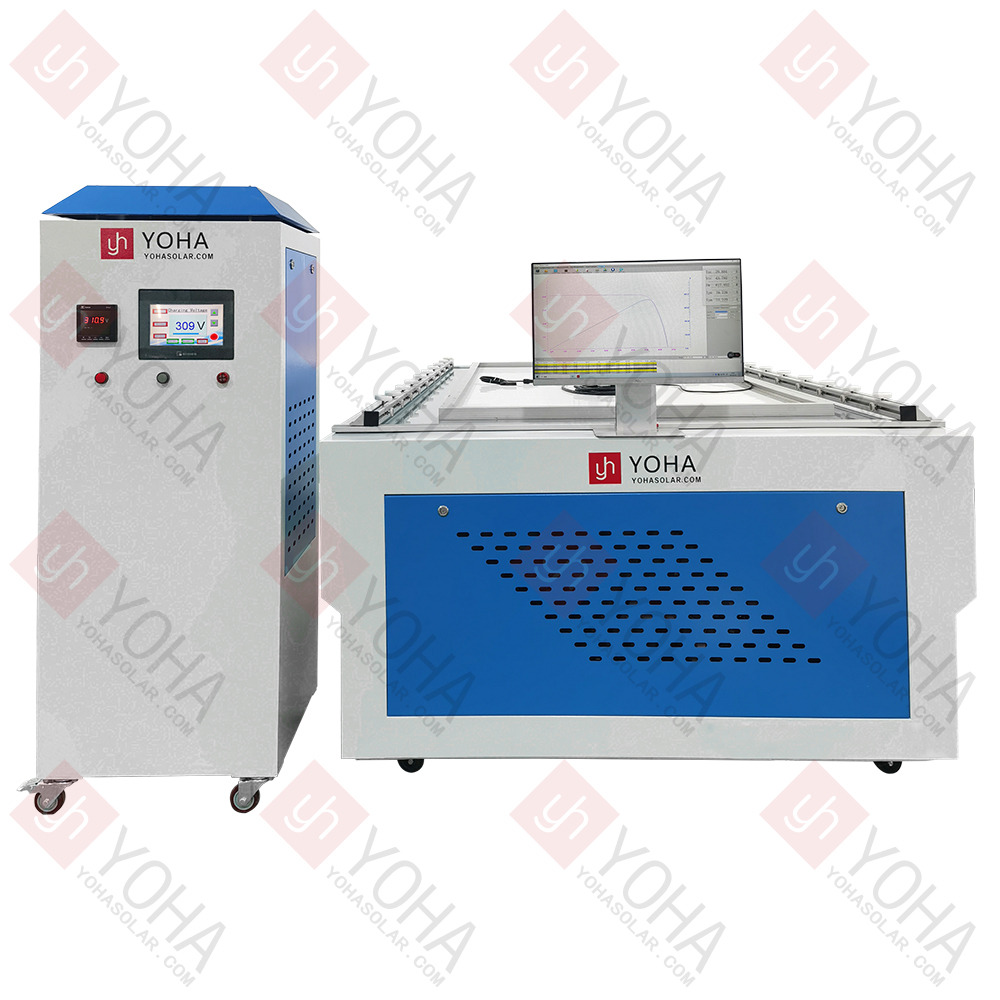Welcome to Wuhan Yoha Solar Technology Co., Ltd!
common problem
Site Map
Language:
 Chinese
Chinese
 English
English
Welcome to Wuhan Yoha Solar Technology Co., Ltd!
common problem
Site Map
Language:
 Chinese
Chinese
 English
English
In the photovoltaic module production process, the IV tester plays the crucial role of a "quality inspector." It acts like a precise doctor, performing a "physical examination" on every module leaving the factory. By measuring its current-voltage characteristic curve, it accurately evaluates core performance parameters such as maximum power, open-circuit voltage, short-circuit current, and fill factor. Selecting a suitable IV tester is not only a necessary step to ensure products meet factory standards but also a key decision for enhancing brand reputation, reducing post-sales risks, and optimizing production processes. So, faced with a wide array of products on the market, how should production line managers make an intelligent choice?
I. Understanding the Core: The Fundamental Mission of the IV Tester on the Production Line
Before delving into the selection criteria, we must clearly understand the core mission of the IV tester on the production line: to quickly, accurately, and stably simulate standard test conditions and complete the final assessment of a module's power generation capability. Its test data is the sole basis for module sorting, power rating, and quality judgment. Therefore, the starting point for selection must closely revolve around the actual needs of the production line, rather than comparing instrument parameters in isolation.

II. Five Dimensions to Build Your Selection Framework
Dimension 1: Measurement Accuracy and Stability – The Non-Negotiable Lifeline
Accuracy is the soul of the IV tester, directly related to the accuracy of power rating and brand credibility.
Key Parameter Focus: Focus on the measurement accuracy of current, voltage, and power. For current mainstream high-efficiency modules, power measurement accuracy should be at least within ±0.5%. Top-tier equipment can achieve ±0.2% or even higher. Be sure to request the authoritative calibration certificate from the equipment manufacturer to understand its traceability system and uncertainty analysis.
Stability is Crucial: The production line environment operates 24/7. The long-term stability of the equipment is more important than ultra-high accuracy at a single point in time. Inquire about the equipment's drift during prolonged continuous operation and the calibration cycle recommended by the manufacturer. A highly stable device can significantly reduce production losses caused by frequent calibration and data fluctuations.
Dimension 2: Testing Speed and Capacity Matching – The Efficiency Multiplier
Testing speed directly determines the production line's cycle time and maximum capacity.
Pulsed Light Source is Mainstream: Production line IV testers use short-pulse flash simulators, with pulse widths typically ranging from a few milliseconds to tens of milliseconds. You need to ensure that its pulse width is sufficient to cover the module's response time. Simultaneously, the total time of the entire testing process (including module positioning, flashing, data acquisition, analysis, and transmission) must match your production line's cycle time.
Balancing "Flash" and "Data": A faster flash isn't always better. The key is whether the data acquisition card can maintain a high sampling rate under high-speed flashing, ensuring the IV curve has enough points to restore its true shape. This avoids power calculation distortion due to too few sample points, especially for modules with complex internal circuits.
Dimension 3: Spectral Match and Uniformity – Simulating Real Sunlight
Whether the light emitted by the tester "resembles" real sunlight directly affects the authenticity of the test results.
Understanding the AAA Standard: International standards classify solar simulators into three levels, A, B, and C, corresponding to spectral match, irradiance non-uniformity, and temporal instability. The production line preferred should be AAA class, meaning it achieves the highest level in all three dimensions. Among them, Spectral Match determines how well the test light source matches the AM1.5 standard solar spectrum, directly affecting the accurate measurement of the module's short-circuit current.
Irradiance Uniformity Matters Globally: Non-uniform illumination can cause local areas of the module to become bottlenecks for power output, resulting in measured power being lower than its true capability. Ensure the irradiance uniformity of the test area meets the testing requirements for large-sized modules.
Dimension 4: Equipment Compatibility and Automation Integration – A Key Link in the Smart Production Line
Modern photovoltaic production lines are highly automated; the IV tester should not be an information silo.
Mechanical Interface Compatibility: The equipment's dimensions, conveyor height, centering method, etc., must seamlessly integrate into your existing production line layout.
Open Data Interface: The equipment must have standard communication interfaces (such as Ethernet, RS232, etc.) to easily integrate with upper-level Manufacturing Execution Systems (MES) or Enterprise Resource Planning (ERP) systems. This enables automatic upload of test data, automatic module sorting, and real-time monitoring of production status.
Powerful Software Features: The supporting software should have a user-friendly interface, be easy to operate, and not only display the IV curve and key parameters but also possess advanced functions like data traceability, Statistical Process Control (SPC) chart analysis, and yield calculation, providing data support for process optimization.
Dimension 5: Long-Term Reliability and Service Support – The Hidden Investment Cost
The IV tester is a capital investment, and its total cost of ownership throughout its lifecycle also needs evaluation.
Core Component Lifespan: Inquire about the typical lifespan and replacement cost of consumables like flash lamps. High-quality xenon lamps typically guarantee millions of flashes.
Manufacturer's Technical Strength and Service Network: Choosing a supplier with profound technical expertise that can provide rapid response and professional technical support is crucial. Ensure they can provide timely on-site calibration, Troubleshooting and spare parts support to minimize production line downtime.
Adaptability to Technological Evolution: Photovoltaic technology is changing rapidly, from PERC to TOPCon, and HJT. Module current and voltage characteristics are evolving. Ensure the selected IV tester has sufficient measurement range and software upgrade capability to adapt to the testing needs of future new technologies.
III. Summary: Start from Needs, Make an Informed Decision
Selecting a PV module IV tester is a comprehensive technical decision-making process. It requires you not only to understand the device's parameters but also to deeply understand your production line's capacity planning, product technology roadmap, and quality control system.
We recommend you follow this decision path: First, clarify your hard requirements for accuracy, speed, and capacity. Second, based on these requirements, screen for equipment that meets the AAA standard and possesses stability. Then, deeply evaluate its compatibility and scalability with existing and future production lines. Finally, comprehensively consider the supplier's brand reputation, service capability, and long-term cooperation value.
An excellent IV tester is the "Keen Eye" on the photovoltaic production line, the guarantee of your confidence in delivering every high-quality module. We hope this article can help clear the fog and assist you in selecting the most capable "Quality Gatekeeper" for enhancing the quality and efficiency of your production line.
keywords:TOP
18086473422
MESSAGE
